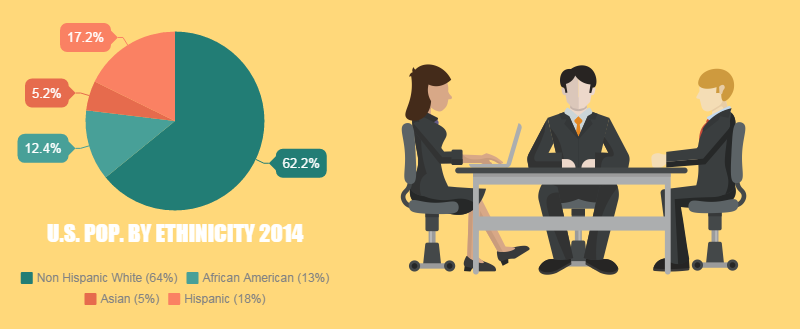- By: Staff Editor
- Date: December 10, 2015
- Source: ComplianceOnline
Access Regulatory Compliance Training sessions led by expert panelists below.
Compliance Webinars |
Virtual Seminars for Professionals

A Diverse Workforce, A Diverse Era
“Let’s not forget that freedom is more powerful than fear; that we have always met challenges -- whether war or depression, natural disasters or terrorist attacks -- by coming together around our common ideals as one nation, as one people.”
- President Barack Obama
Paris. Beirut. San Bernardino. Three cities, three acts of terrorism – and all within a span of few weeks. Investigations are prompt and the perpetrators traced, and yet, questions and opinions swirling around cultural conglomeration at our workplace and community looms large and threatens an economy that depends on this very conglomeration. What then are the barriers that could keep us from accommodating the good and doing away with the obstructive?
What Do the Statistics Say?
Statistical data on the percentage of US population by ethnicities indicate that 62.2% of the population is Non-Hispanic White, 12.4% African American, 5.2% Asian, 17.4% Hispanic, and the remaining relegated to smaller percentages of other ethnicities.
The statistical forecast for 2060 indicates that the scales would tip in favor of a more diverse workforce with Non-Hispanic White contributing to only about 43.6% of the population.
In France, the population statistics reads: 85% white people of European origin, 10% North African, 3.5% Black people and 1.5% people of Asian origin.

A Workforce Driven by Its Differences
Big or small, the workforce accommodates these differences to supplement their growth and technical dearth. While a sudden influx of cultural differences might be a bit much to chew, this influx was not sudden, beginning from before the baby boomers generation in fact.
So then what can you do to embrace this diversity? To go beyond the negative stereotypes and identify cultural similarities that you can relate to?
An increased level of understanding about other cultures can help you find a few similarities with your own that might surprise you.
Within your workplace or in educational institutions, support the use of materials that represent various cultural groups in your community.
Listen to people and ideas that are different from your own – you never know what you’ll find.
Imposing your values on others doesn’t work at home, so don’t take it outside either.
And finally, never let an accent or lack of proficiency in a language be the yardstick for intelligence or competency.
Source:
https://www.whitehouse.gov/the-press-office/2015/12/06/address-nation-president http://www.statista.com/statistics/270272/percentage-of-us-population-by-ethnicities/ https://en.wikipedia.org/wiki/Demographics_of_France
Additional Resource:
Building a Culturally Competent Organization - Diversity the Right Way!




















